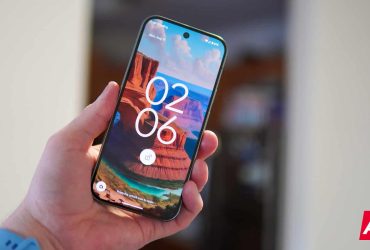5 Ways I Keep My Android Phone And Data Safe While Traveling

Contents
Traveling with an Android smartphone is incredibly convenient thanks to the open ecosystem and flexibility the OS offers. However, travel also brings challenges — especially when it comes to keeping your phone and data safe. Having visited many destinations over the years, I’ve developed a few habits to secure my Android device and personal data. Here are a few things I follow to stay safe while traveling with my smartphone.

5 I always use a VPN on public networks
No free Wi-Fi is worth risking your data

One of the first things we often do when landing at an airport or visiting a café is connect to public Wi-Fi. But using public networks can be risky, as many of them are poorly encrypted, leaving your data exposed to hackers or cybercriminals.
One of the best ways to protect yourself is to avoid public Wi-Fi entirely. If that’s not possible, the next best thing is to use a VPN. A VPN encrypts your internet connection, adds an extra layer of security, and masks your device’s IP address. Some VPNs even let you browse as if you’re in your home country, which can also be useful for accessing region-specific content.
There are many great VPN options available on Android, including both free and affordable paid services, so do make sure you end up using a VPN (even a free one) to keep your connection secure from prying eyes.
4 I keep Find My Device turned on
I can locate or lock my phone from anywhere
Apple has long offered its Find My app to track ecosystem devices and AirTag products, but Google has recently caught up by providing a similar experience on Android through the Find My Device app — soon to be renamed Find Hub, as Google recently revealed.
You can now track not only your Android devices, but also accessories like the Pixel Buds Pro 2, and supported item trackers such as the Moto Tag and Chipolo devices, all from the same app. You can also access Find My Device on the web to locate your devices.
If you’re concerned about your data in case your phone is lost or misplaced, the app also lets you lock your phone remotely or perform a factory reset. Whenever I travel, I always attach Find My Device-compatible trackers to my valuables, and make it a point to keep an eye on my phone and tablet through the app for added peace of mind.
3 A simple neck lanyard helps prevent theft
It keeps my phone close and pickpockets away

Robbery and phone theft, unfortunately, remain common in many countries. While Google is doing its part by introducing features in Android 16 that can render a stolen phone useless, as well as other protective measures, theft still occurs in many areas.
One of the best ways to protect your phone in such cities or regions is by using a neck lanyard, which allows you to physically secure your phone around your neck and prevent snatch theft. Many brands, including ESR and Casetify, offer lanyards compatible with most Android smartphones.

Related
Best phone lanyards in 2025
Hold onto your phone in style
2 I never scan random QR codes or install shady apps
One tap is all it takes to get in trouble

When visiting a new country or city, it’s common to download apps for cabs, food delivery, navigation, and more. However, it’s important to avoid downloading third-party or unverified apps from the internet. You should always stick to trusted apps from the Google Play Store to ensure your data is safe. Some apps may appear legitimate but could misuse your personal information.
Likewise, avoid casually scanning QR codes in unfamiliar locations. A QR code can redirect you to unsafe websites or apps, potentially exposing your phone to security threats. I’m always cautious about this and only scan QR codes from trusted sources — and you should do the same.
1 I prefer eSIMs over physical SIM cards
It’s safer and easier than swapping physical SIMs

While there are benefits to keeping your phone number while traveling internationally, there are also some downsides. One key advantage of using an eSIM over a physical SIM is that your number is much harder to clone. Physical SIM cards can be duplicated using specialized hardware, but eSIMs are encrypted and securely downloaded, making them more secure.
This means that even if your phone is stolen, it’s harder for someone to access your personal data or OTPs, which could be used for things like unauthorized bank transactions.
Using an eSIM also offers other benefits, such as lower costs compared to international roaming charges from your carrier. Plus, you’re less reliant on public Wi-Fi, which adds another layer of safety while traveling.

Related
These tips help keep your phone and data safe while traveling
While Google has improved Android’s security significantly over the past few years, Android devices still face threats. There are several settings and features you can enable to better protect your phone — and these are the ones I always activate whenever I’m preparing to travel.
What’s your reaction?
Love0
Sad0
Happy0
Sleepy0
Angry0
Dead0
Wink0









Leave a Reply
View Comments